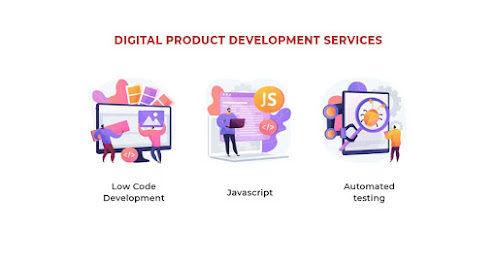Whether tangible or intangible, all products are designed to offer added value to creators and consumers. The former usually generates revenue from the product, while the latter uses it to solve certain problems.
Basically, digital products are tools or services that interact with consumers through digital media, such as banking services provided through banking applications. In contrast to low-level sequences, most high-level workflows in digital product development agencies consist of the same components. These elements can be customized depending on the complexity and requirements of the project.
What is digital product development?
In the digital age, a product (or brand in this sense) does not compete with similar products. Instead, it competes against everything that’s fighting for the user's attention. Modern consumers are routinely bombarded with messages from brands across all industries at every touchpoint - smartphone, television, tablet, desktop, external banner - the list goes on. Digital product development company emphasizes creating products that not only meet consumer needs but also encourage them to embrace them; it gives them a place in their mental space and they are happy to deal with it despite the many alternatives they have.
In short, digital product development is a user-oriented process. It uses intelligent technology (such as IoT), user analytics, applicable data, design thinking, and marketing principles to develop and continuously improve products that fulfil unmet consumer needs and continuously improve product experiences.
Here are some high-level principles of Digital product development.
Minimum feasible product
For the beginning releases, it is very important to focus on only minimally viable products. Projects can become too complex and the modular approach ensures that no resources are wasted on functionality that is later identified as redundant. To get rid of all the good features, focus on something moderate and gradual for now. This technology makes turning easier when needed.
Ideation
The ideation is to identify problems and develop solutions in the form of digital products. Since only 10% of ideas become successful digital products, you should use this phase to define the perspective of your idea and to avoid failure in the first place.
This form may comprise activities such as examination and analysis, budgeting, value proposition, and strategy.
Research and Analysis
This is one of the most important steps in any product development cycle. This includes collecting and analyzing various data to understand the target audience, identify competitors' strengths and weaknesses and assess the market suitability for the product.
Budgeting
In this step, the available financial resources are determined and the short-term and long-term costs are estimated.
Value Proposition
A value proposition identifies the advantages and disadvantages of your product from the end user's point of view. This powerful analytical approach helps to check the validity of your digital products.
Strategy
One of the main reasons startups fails is that their strategy is based on inspiration. A success strategy is based on a product roadmap with clear objectives, value propositions, success metrics, performance plans, and competitive analysis.
Sketch & Wireframing
Now is the time to start thinking about the design of this digital product. When you hire an agent, they can hire professionals to help you develop it. However, it can be useful if you are doing a preliminary product design or wireframe for your concept. This can help your partner understand your ideas and make budgeting more accessible, clear, and accurate.
Let yourself be data-driven
Create an atmosphere for data-driven decision-making. From innovation efforts to management actions to strategic decisions, everything should be based on data, not on gut feelings.
Building sustainability
Product development for the future. Ensure the long-term financial health of the organization by investing in products and processes that benefit local communities and contribute to sustainability.
Invest in a modern web stack
In a world where customers want customization and on-demand access, reducing time to market is a huge competitive advantage. Companies that invest in a digital product development services modern web stack consisting of the best of their kind are positioning themselves as leaders in their industry.
Use open-source technologies and standards
Open-source offers two benefits - a thriving community and protection against phaseout- thereby assuring the durable availability of skills and technology.
Scalability is built-in
Avoid the risk of scaling failure (or pre-race failure of scaling) by choosing tools and platforms that enable scalability from the start. With an ideal platform, rapid prototyping and scalability should not be/or the solution.





No comments:
Post a Comment